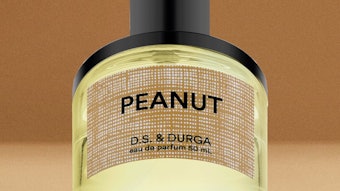Fragrance is a pleasure, an aura, an end in itself; but it also is a scientific phenomenon that tantalizes and entreats sensory exploration. According to Mastertaste, a global flavor and fragrance manufacturer, the object of its current study is to increase understanding of a perceptual process called sensory adaptation, as a prelude to the development of longer-lasting aromatic materials. To facilitate the research, Mastertaste recently entered a three-year partnership with Monell Chemical Senses Center, a research institute focused on the science of taste and smell.
An aroma initially is strong but then the scent appears to decline over time, sometimes seeming to disappear. This phenomenon, known as sensory adaptation, is not related to changes in the concentration of the aroma, but instead is a function of our biology, says the Monell and Mastertaste team. The aroma of a favorite dish simmering on the stove or the fragrance of a lit candle will last only so long before the brain, and the nose, stop noticing it. Some aromas are more resistant than others to sensory adaptation, but it is not known why.
“There are many situations where the perceived aroma decreases over time,” said John Bedford, chief technical officer at Mastertaste. “For example, as a soup or stew begins to bubble on the stove, there is an immediate burst of aroma. However, over a prolonged period of time in the kitchen, the cook ceases to perceive the aroma. Imagine the value a food manufacturer can add to the finished product if that tantalizing smell is evident in the kitchen throughout the entire food preparation process,” said Bedford.
Mastertaste believes the findings of this research will facilitate the development of aromatic materials and processes that resist sensory adaptation. Longer-lasting perception of flavor and fragrance aromas could bring a technology breakthrough to the industry, allowing manufacturers to produce products with an added flavor and aroma dimension and a higher marketable value.
Potent Combinations
Longer-lasting fragrance perceptions, combined with new additions to the expanding perfumer’s palette, are a potentially potent combination. Moving from kitchen creations to fine fragrance, Markus Gautschi, head of fragrance research at Givaudan, shared some of Givaudan’s latest fragrance molecule research. “The development of new molecules and unique naturals to enrich the perfumer’s palette remains a primary objective of Givaudan’s Fragrance Research Center, based in Zurich, Switzerland. In 2005, four new proprietary molecules were introduced to the perfumer’s palette,” said Gautschi.
Pomarose, a rich fruity note, reminiscent of rose and apple pie, meets the gourmand trend of comforting scents from the food world. Cosmone, a musky note gives an elegant touch to numerous accords. It’s a biodegradable molecule that along with Nirvanolide, enlarges Givaudan’s range of environmentally friendly macrocyclic musks. Also introduced were Serenolide, a white musk with sweet, fruity connotations, for warm and velvety notes that blend with fruity accords, and Safraleine, for spicy saffron freshness, to fit fine fragrance’s demand for spicy smells.
Science continues to impact a market that, according to Euromonitor, benefited from the 2005 Christmas season with celebrity and designer fragrances impacting sales. A growth in fragrance sales of 3% improved on the 2% growth rate recorded in 2004. Premium women’s fragrances took the lead in 2005, with current value growth of 5%. With the market poised for innovation, technology plays a leading role.
The recent launch of Roberto Cavalli’s Serpentine, which combines science and sensuality in a floral, amber and mango flower construction, is an example of melding molecules and myth, in fragrance. The mango flower, which according to Brazilian legend is said to entice the serpent until its taste induces a state of euphoria, is abetted by the tiare flower, mandarin, frangipani, amber and sandalwood, in Serpentine. Created by perfumer Jacques Cavallier of Firmenich, it drew on a special molecule technology for its amber note. Firmenich said, “The ambery note of Serpentine comes from Ambrox, a molecule of Firmenich scientific research, which is very powerful and performing. It is obtained by one of the main components of clary sage and therefore can also be defined as ‘vegetal amber.’ It is part of the latest generation of amber molecules created to substitute for natural grey amber, which has become rare and consequently is not available in sufficient quantity.”
Cooling Molecules
Molecules continue to make news with a development launched by International Flavors & Fragrances. A high-intensity cooling technology, called CoolTek™, using proprietary molecules developed through IFF’s research into human cold perception, has been used to enliven foods, beverages, gum, pharmaceutical and fragrance products. The cooling compounds also have helped generate new product lines such as breath films. In the fragrance area, new Curve Chill for Him and Curve Chill for Her, from Liz Claiborne, utilize the compounds.
Curve Chill for Her offers a burst of crystallized ginger, citrus and green tea, with peony and subtle woods. Curve Chill for Him is a fusion of citrus and bergamot, with green tea and cooling white pepper, vetiver and musk. The fragrances, which launched in March, are seen as summer fragrances, and are packaged in frosted white bottles.
Researchers at Takasago’s Sensoral™ Center have been developing such innovations in sensory enhancements as heating, cooling and tingling. They discovered a series of contributing materials capable of modifying and amplifying skin surface response, and enhancing the value of odor properties by creating a multisensorial effect in fragrance products. These captive sensate™ materials are said to be derivative of the 2001 Nobel Prize winning asymmetric aroma chemical synthesis and are designed to evoke a variety of sensations. They initially were identified as materials that stimulate the trigeminal system (a pair of nerves that rise from the cerebellum and separate into three separate nerve divisions in the face, oral and nasal cavity) for use in flavor creation. Takasago expanded the technology to include fragrance application enhancement. The Center is working to build on this palette of materials and effects, and future sensory-invoking fragrance innovations.
Pulse Points
David Garon, brand manager of Hush Fragrances, recently launched Hush Aroma-Pulse, an automated home fragrance system, consisting of a small, patented electronic device that attaches to an aerosol can and emits controlled delivery of fragrance throughout the day. The intensity, frequency, and timing of fragrance sprays such as Laundered Linen and Mediterranean Fig, may be adjusted. “The Aroma-Pulse system permits fragrancing the home without altering the fragrance by burning or passing it through a wick,” says Garon. Fragrance sprays take a different form with Valois’ Imagin, a form of mini-packaging that is very flat and emits a spray of fragrance. The technology is a result of collaboration between Valois and Estée Lauder Companies Inc., to create a single-use atomizer that can be inserted into magazines and provide consumers with a true representation of the fragrance. Valois provided the technology to the Lauder Cos. exclusively for one-year distribution in magazines. Imagin has a patented expandable design that can be presented flat for inserts, or for handing out at events, and has a large surface for advertising. Once the package is opened, air enters, allowing the consumer to squeeze the sample to emit a mist of fragrance directly onto the skin.
Arcade introduced Mini-LiquaTouch® for targeted, on-skin trial fragrance sampling. It seals the fragrance formula between two layers of specially fabricated materials that protect an applicator pad. When the layers are pulled apart, a sample of the fragrance is available for consumers to try. Virtually zero moisture loss and no product migration ensure formulation integrity. It can be inserted into magazines without incurring ride-along-rate surcharges and may be used as stand-alone or affixed to any substrate. A hermetic seal provides material and construction stability.
Liberated Perfumers
Technologies that improve the performance and portfolio of fragrance are not the only things developing in the industry. Research and technology centers are operating that will facilitate future advances. One recent example is drom’s Fine Fragrance Studio, a creative center in New York City’s Tribeca, designed to optimize interaction between all participants in the fragrance creation process. Drom eliminated traditional office structures, liberating perfumers from boundaries, and installed workstations at one central meeting point—the perfumer’s bar. The street-level fragrance studio features floor-to-ceiling windows that connect the working area with life outside, optimizing the interaction between the perfumers and the distinctive personality of the neighborhood. The perfumer’s bar, officially called the Central Interaction Module, is equipped with an integrated air ventilation system to purify air directly around the meeting area and to prevent contamination from the lab. Walls and doors of the lab are sealed hermetically, and an independent air circuit provides fresh air and removes contaminated air. The guiding principle of transparency is supported by the studio’s glass design, as well as proximity to the lab during creative working sessions with clients.
Givaudan introduced ODoR Analysis, designed to be a predictor of fragrance success in the marketplace. The technology was created in response to a degree of “olfactive sameness” in the industry, which was attributed in part to marketing research methods favoring consumer’s familiarity and, thus comfort levels with fragrance. In an effort to “reclaim olfactive territory” with new and edgier fragrances, the company built a model that would be more strongly related to in-market performance than traditional methods. Basically, ODoR analysis challenges conventional thinking by identifying a more accurate predictor of sustainable success and by challenging assumptions about signature and in-market performance. Givaudan developed measurements that define ODoR analysis:
- O, meaning ownability, to identify fine fragrance olfactive signals that overlap less with other product categories;
- D, for disruption, to identify signals that are differentiated from other fine fragrances on the market; and
- R, for relevance, said to be its single strongest predictor of fragrance sales. The technology is designed to allow for greater flexibility and creativity in fragrance design, ultimately translating into true fragrance innovation and strong sales performance.
Uniting fragrance, an end in itself, with business success and consumer demand, is an ongoing adventure, and a mandate, for this industry. Ultimately, aesthetics, science, strategy and nature, will continue to support the cycle.










